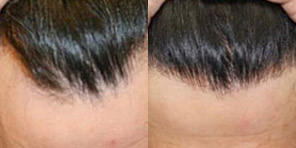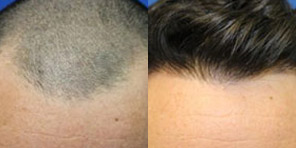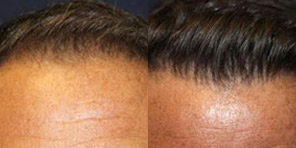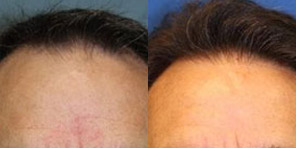This is a very common question that my staff and I are frequently asked at the consultation. Patients are often quite concerned about how best to prepare for a hair restoration procedure, especially management of their hair. I think it is very helpful to personalize this for my patients; I am open about sharing my personal experience with undergoing an FUE hair replacement procedure using the Neograft system. Now my patients seem me in a different light, not only as their physician but also as a fellow patient who has already experienced what they are soon to undergo. In addition, one of my staff has also undergone the same procedure and is available after hours by cell and email to answer any further questions or concerns. With this “hands on” approach, the anxiety level of patients is significantly reduced which is reflected in a quicker recovery.
Contents
Preparing for the Hair Transplant Procedure
Several weeks prior to the hair transplant procedure our staff usually schedules each patient for an appointment with me and my staff. For patients who live out of town this can often be accomplished via Skype. Our patients meet the members of the hair restoration team. Detailed written instructions are provided for the hair transplant procedure and reviewed with each patient. We advise patients not to color or perm their hair for at least two weeks prior to the transplant. It is not necessary to spend time and money cutting or styling their hair before the procedure; this is done the morning of the hair transplant session.
Readying the Donor Area
The area which is used to harvest the hair grafts is shaved down to a zero blade. The donor area is generally the scalp along the back and/or sides of the head. If the number of grafts needed is relatively small (few hundred) then it may be possible to shave a small area of the head and allow the longer hair to cover over it. However, most cases involve harvesting over 1000 grafts and require the entire back of the head to be shaved down. We are often able to blend this with the rest of a patient’s hair to create a short hair cut at the time of the procedure. Some patients prefer to simply shave their entire head and allow the hair to grow back naturally. Within two weeks hairs have already begun growing in the donor area along the back of the head and no one else will really notice you have undergone a hair transplant procedure.
The Bald Spots
The areas into which hair grafts are placed to correct baldness is known as the recipient area. What happens to the hairs in this location? Once the hair transplants are inserted into the scalp they are nourished by the surrounding scalp waiting for small blood vessels to grow into each graft. During the first 3 days after a transplant the grafts are very delicate and susceptible to being dislodged. The scalp may still be numb so be careful to avoid striking the head on surrounding objects like the car roof. Patients often notice small scabs or crusts on the surface of the scalp where the transplants were inserted. These gradually flake off within 7-10 days after the procedure as part of the natural healing process. Patients are able to wash their hair the morning following the transplant. Soap can be applied to the scalp using a small cup in the shower. It is gently rinsed away with this cup which is filled with water from the shower. We recommend avoiding any contact with the hair transplant grafts by the shower head or fingers. After one week it is ok to gently rub soap into the transplanted areas with your fingers and rinse with shower water.
Two Weeks Later
Within two weeks of a hair transplant procedure, most of our patients are able to return to work. Hairs are already growing within the donor area and all tiny crusts in the recipient areas along the frontal and crown region have fallen off. Patients are generally able to color their hair about one month following the procedure and resume physical exercise programs within two weeks after the transplant and vigorous sports within a month.







